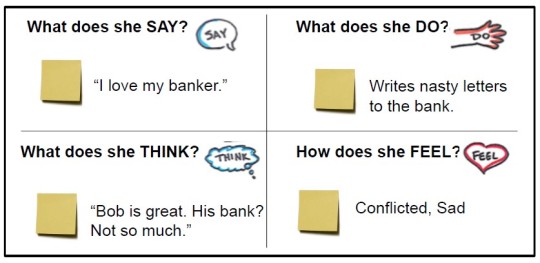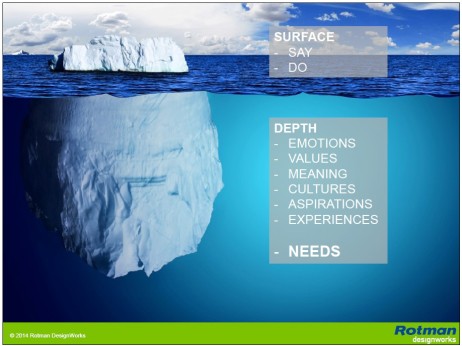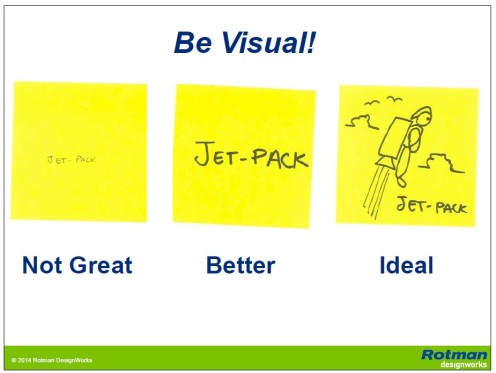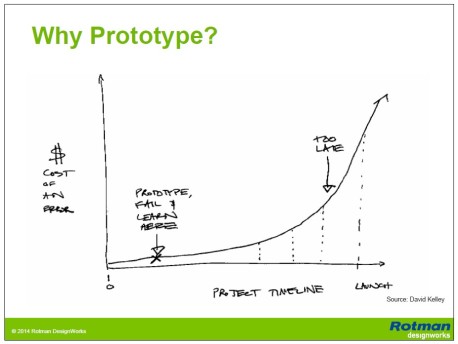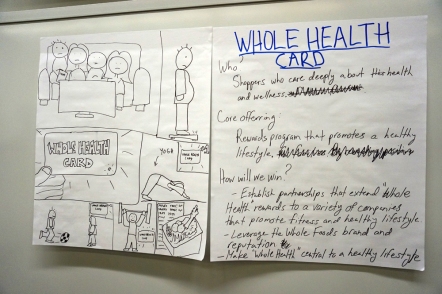Tell me everything that's wrong about it because I know I can fix it
- David M Kelly
This blog is based on my experience at the Rotman Business Design Boot camp that I attended in 2014. The images that I’ve used in this blog are from the slides used in the event.
Business problems and opportunities are all around us. And everyone got ideas. Some have big ideas and some others have smaller ones. But are they really the solution for the problem at hand? How can we know that?
Here comes the importance of business design to produce what the customer needs. Business Design would help you put structure around your thoughts. It helps you take that next step to define in more concrete terms what you want to make or do to satisfy customer needs, which helps when you want to present this great idea to the world. It helps you to analyze your concept against the backdrop of reality to understand if the great idea is indeed that great or not. Business design follows a few simple but thought provoking steps to get from the need to the solution concept, which later materializes into a product.
For simplicity, it can be taken to work out in three steps
- Empathy and need finding
- Ideation and prototyping
- Business Strategy
Once you’ve a product, it’s equally important to do decide where you’ll market your product (deciding on your ideal customer, where to find your ideal customer) and how you’ll play to succeed in the chosen market. Basically determine your Business Strategy. Described in this blog are the first two steps – from identifying what the need is to coming out with a product that you think best satisfies that need. Business strategy, is too broad to be discussed in this space. Also, the whole process works best when done as a team of 4 to 5 people. That’s how we did in the Rotman design boot camp and so I’m going to assume such a team for rest of the blog.
Empathy and Need Finding
Empathy and need finding is about identifying what the customer really needs which might be very different from what they say they want. Unless we are all Steve Jobs, the process starts with asking the customer. Be a patient listener. Open ended questions such as “Why is that important” or “Tell me more about that” work best to extract maximum information. Once you believe you have got as much as you can from them, step into the next process which is to draw an empathy map.
An empathy map is a simple structure to differentiate what the user really needs from what she might say. Take a big sheet of paper and divide that into four quadrants. One on each quadrant, write “What’s she saying?”, “what’s she doing?”, “How does she feel?” and “What does she think?
From the discussion you had with the many customers, try to extract the deeper meaning and write that in each quadrant and complete the empathy map. Discuss the tensions and barriers.
Remember, it’s the customers need and not the want. This is really the time to go below the surface, get behind the mind, and understand the customer.
From the empathy map, pick couple of pressing needs that you identified for the customer. These needs are going to be the catalyst that would plant the seeds of great solutions.
Brainstorming: Ideation and Prototyping
So by now you may have fairly good opinion what customer requirements actually need to be satisfied. The next step is to generate ideas that would satisfy the needs. Couple of points to be kept in mind while you are brainstorming for solutions
- Defer judgement because criticizing too early stops the flow of creative ideas.
- Build on others ideas to make new possibilities. Share your ideas continuously.
- Go for quantity. Generate as many ideas as possible
- Come up with whacky crazy ideas; they might turn out to be the best solutions; who knows?
- Don’t get hung up on one thought. Get the essence of your idea, don’t wait to chart out the details and move on to the next.
Sort, reflect, and pick
Now that you probably have a ton of ideas generated, it’s time to figure out the best and move forward with it. Start sorting the ideas into three group – Boring, Cool, and Crazy. This might help you to identify the best idea from the lot to move forward with.
Visualization and Prototyping
Now that you’ve the one idea that you want to make a product, it’s time to prototype. The later you do the prototype, the more expensive it’s going to be; so earlier the better. Know that to create a robust product, you have to test your ideas early and as often as possible.
Prototyping is not always expensive or time consuming. Check out the videos below.
These short videos might help explain the concept of prototyping.
IDEO’s David Kelley on the Culture of Prototyping
Rapid prototyping Google Glass – Tom Chi
Feedback
It’s time for feedback. Does your idea really makes sense? What can be improved? What should be changed? This is the time to know that. The intention of this exercise is to know more, so do not get defensive. Find people around you. Use the prototype, explain the idea, and solicit more information with open ended questions such as
• What do you like?
• What would you change?
• What questions do you have?
Each of the questions can give information to make your product even better. With the feedback you received, go back to the drawing board and see if there are things that your can improve and repeat the process as many times as you can till you are really satisfied.
So by now, we went from understanding the customer’s underlying need to coming out with a product that would satisfied that need. And when we add the business strategy part to the mix, we’ve a practical solution to a business problem. This is the core concept of Business Design. Better understand the customers, design seamless experiences, and create a winning strategy.
